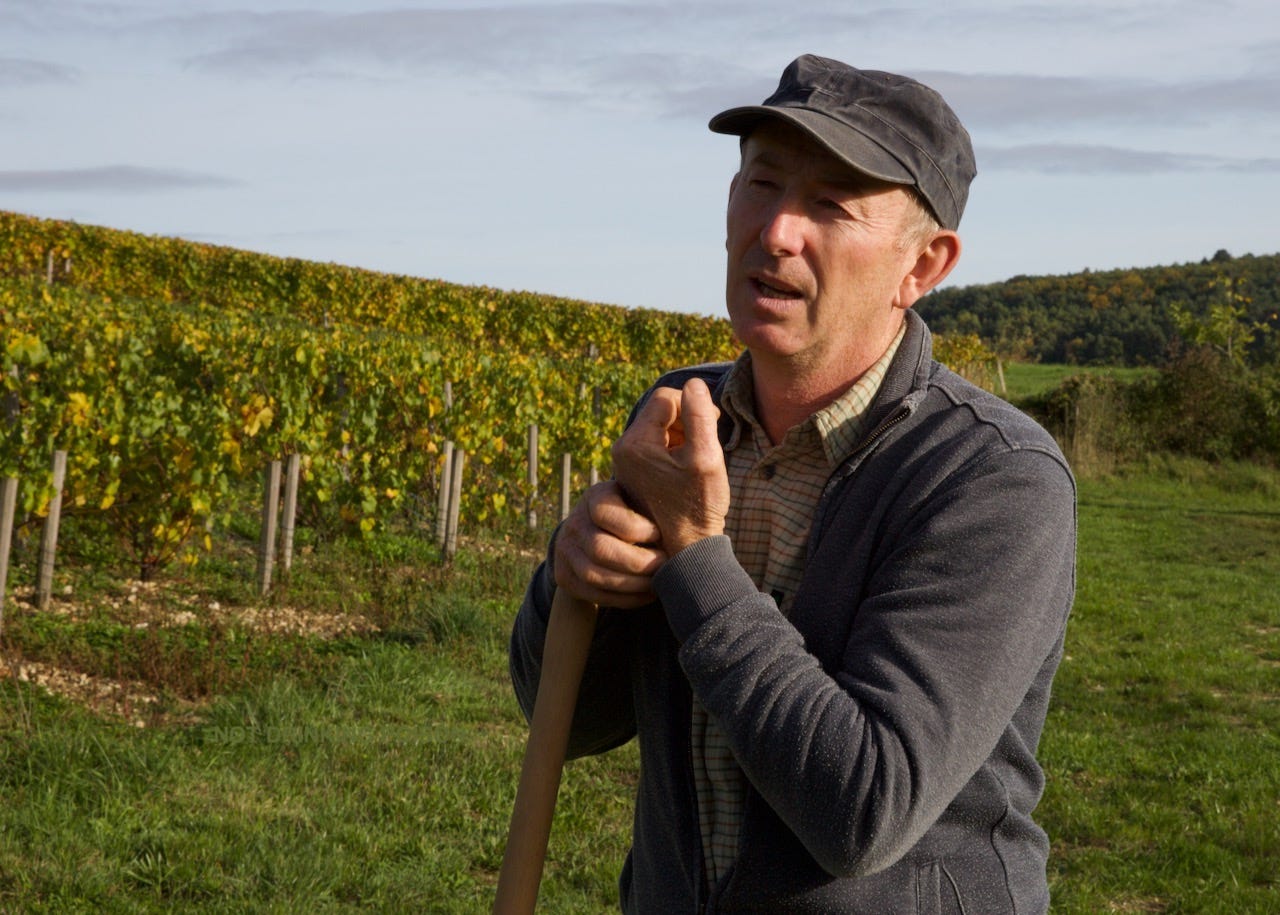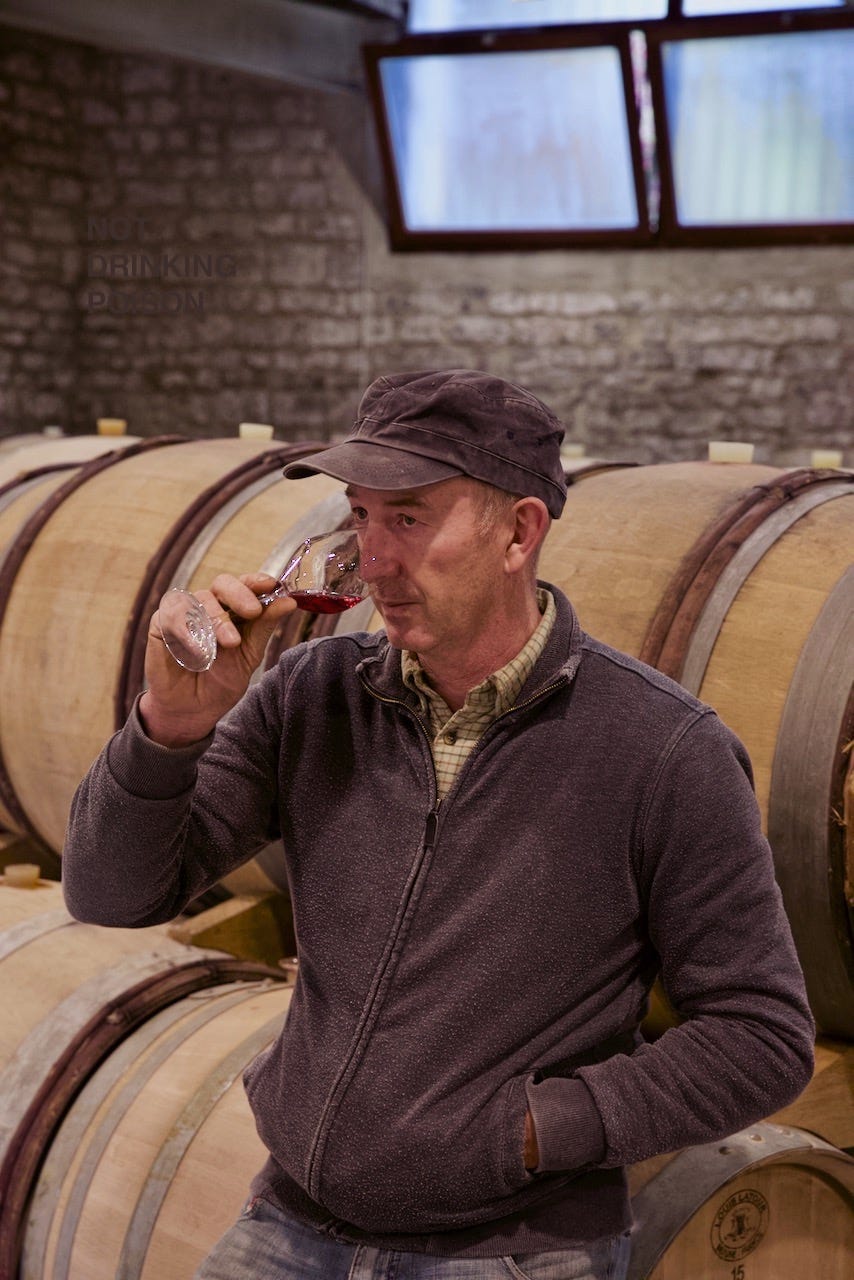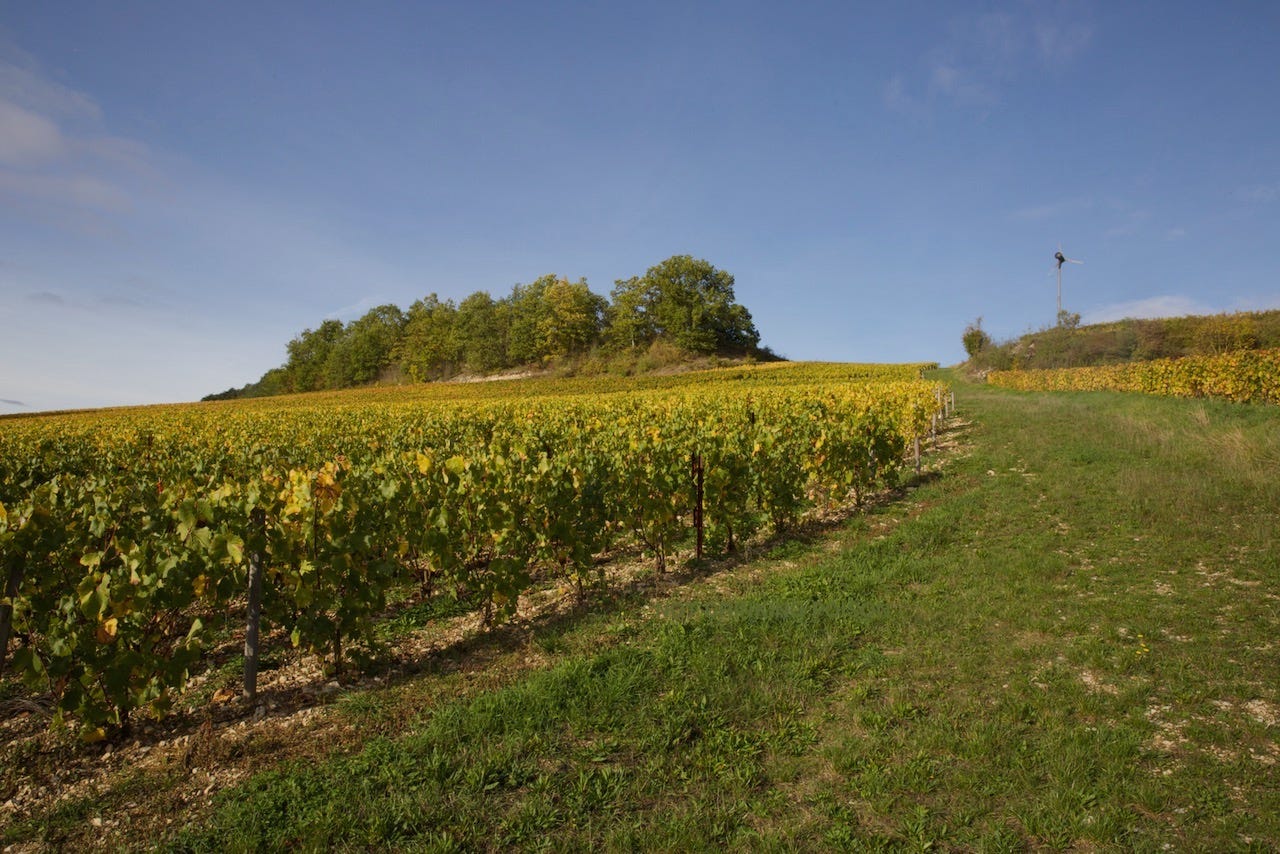An Alternative History of Champagne Terroir
The négociants of the Marne tell it one way. Aube biodynamics pioneer Bertrand Gautherot of Vouette & Sorbée tells it another way.

A few hours in the company of the eloquent and iconoclastic Vouette & Sorbée vigneron Bertrand Gautherot gives you several years’ worth of food for thought.
Part a well-established mixed agricultural farming family in Buxières-sur-Arce, Gautherot has been cultivating vines since 1986, and began producing champagne with the encouragement of Anselme Selosse in 2001. Unlike his mentor, Gautherot has at times taken an active role in the biodynamic wine and natural wine communities of the last two decades. Since his brief involvement as a co-founder of the Association des Vins Naturels, he regularly presents at La Dive Bouteille, and has mentored more than a few natural-style Champagne winemakers himself, including Bénédicte Leroy of Champagne Ruppert-Leroy, and more recently, Benoit Doussot, with whom Gautherot collaborates on the négociant project Champagne Clandestin.
Our conversation back in October 2019 covered a broad range of topics. I thought I’d share Gautherot’s précis of the history of Champagne terroir classification, which stuck with me for how much sense it made, and for how it turns received wisdom about the region’s terroir on its head.
Quick Facts
Vouette & Sorbée comprises 5ha in Buxières-sur-Arce, in the Côte des Bar. Gautherot began cultivating vines in 1986, and took over a share of his father’s vineyards in 1993. He began producing champagne in 2001. His farming has been certified biodynamic since 1998.
The estate is named after its two key vineyards, Vouette and Sorbée. Sorbée is pinot noir, while Vouette was once pinot noir, but has since been partially replanted to chardonnay. A third vineyard, Biaunes, planted to pinot noir and chardonnay, is also in production.
Before becoming a full-time vigneron in 1993, he worked as a product designer in the luxury cosmetics industry.
All of the estate’s pinot noir comes from cuttings from Volnay, rather than the Aube, due to a local dispute in his grandfather’s era. Gautherot however believes chardonnay has a greater future in his sector. He farms a greater percentage of chardonnay than most in the region - around 41%, thanks to a flurry of planting between 2000-2004.
From the start, Gautherot produced primarily single-vintage wines. (His entry-level bottling “Fidèle” contains 7% of wine from a réserve perpetuelle.) He chaptalized his first vintage, but never repeated the practice, and has never practiced dosage. Prise de mousse is generally initiated with a native yeast starter and organic MCR.
Reached by phone for factchecking, Gautherot reports that 2021 was a particularly low yield year, due to the spring’s black frost episode. Yields were around 18HL/ha.
Three hours’ drive from Champagne’s financial capitals in the Marne, Gautherot’s native Aube sector, which acceded to the Champagne appellation only in 1927, has for much of its winemaking history been considered a vassal zone of grape resources for the Marne, where Champagne’s historical Grand Cru and Premier Cru sites are clustered.
BERTRAND GAUTHEROT ON CHAMPAGNE TERROIR CLASSIFICATION
This is an excerpt from an interview conducted in October 2019. It has been condensed and edited for clarity.
BERTRAND GAUTHEROT: Among the Champenois, it’s said that in the Côte des Bar, there’s so much substance and salinity that the bubbles are square.
When you export champagne to Brazil, you have to analyze the dry extract. In a lab they evaporate 1L of champagne over six hours at 600°C. In the Marne, you arrive at 10-15mg of dry extract. Here, if the wine derives from a well-rooted organic vineyard, you find 40-60mg of dry extract.
It’s thanks to these big minerals that we were always classed low among the crus of Champagne. But it was the bourgeoisie who determined the crus of Champagne. They needed elegance. We were too Bourguignon. But we were classed as Champagne, because in bad years the Marne needed grapes.
The story of crus was built by commerce in Champagne. Up around Reims, it’s potato plains. Champagne wouldn’t exist without the Gallo-Roman quarries [near Reims and Epernay]. It was the quarries that permitted the space so people could forget the wine for while, so it transforms. At that time, we couldn’t make wines with air-conditioning.
The region’s wine was not very ripe, and they were quite undrinkable, or at least not drinkable rapidly. So they needed cellar space. So they put the wines in the quarries. When they took them out several years later, acidities had lowered, there was a bit of bubbles. It was magic, etc.
Since the era of Dom Pérignon, when the process was mastered, they added sugar. Then the bottles had to be put somewhere. You immediately had a big volume of wine to store somewhere. The big merchants, who were German and Flemish - Bollinger, Taittinger, Roederer, etc. - they understood there was an opportunity, but they needed cellar space.
The merchants wanted to buy the prettiest grapes. And the prettiest grapes are the ones that arrive intact to the press. But you’re transporting them on a horse. So the grand crus are all less than two hours by horse from the quarries. It has nothing to do with the terroir, or whether your vineyard is well-exposed or not. They didn’t care. They just wanted the grapes intact.
Around here [in the Côte des Bar], it’s different. People kept fields for animals, they planted cereals, to make bread, etc. They kept the poor, well-drained soils for vines. You find that dynamic in a lot of regions that produced still wine.
People here didn’t believe in the business of champagne. We said, “Whoa, easy now.” We know we need to eat, we need animals, we need stones. We’re not going to put vines everywhere.
That’s maybe why today you have more organics here. We’re a tiny morsel of Champagne - I think we’re less than 10% of the surface, but we account for 40% of the region’s organic vineyards. Because you still see some variety in the landscape here. You still have trees where animals can shelter. There’s still a heterogeneity of agriculture. Vignerons can still think like farmers, because we’re far from the business centers and the bling-bling: Epernay, Reims, Troyes, Beaune.
Around here, you have more youth who go to viticultural school in Beaune, rather than Avize. The viticultural school in Avize is a fashion show of Porches and big cars. Whereas at the school in Beaune, they especially like to drink wine. It’s a very different mentality. And the youth who pass through Beaune, they come back here and say, “Putain, we have to make a bit of wine!”
FIN

Vouette & Sorbée
8 Rue de Vaux
10110 BUXIERES-SUR-ARCE
FURTHER READING
A January 2022 preview tasting of Côteaux Champenois wines at the estate of Gautherot’s erstwhile protégée, Bénédicte Leroy of Champagne Ruppert-Leroy.
A January 2022 interview with another early pioneer of biodynamics in Champagne, David Léclapart.
A 2008 blog post with some nice quotes from Bertrand Gautherot at Le Vin de Mes Amis.
An extended 2021 video interview with Bertrand Gautherot by Véronique Rivest.



What an interesting and dialectic mind this fella has got